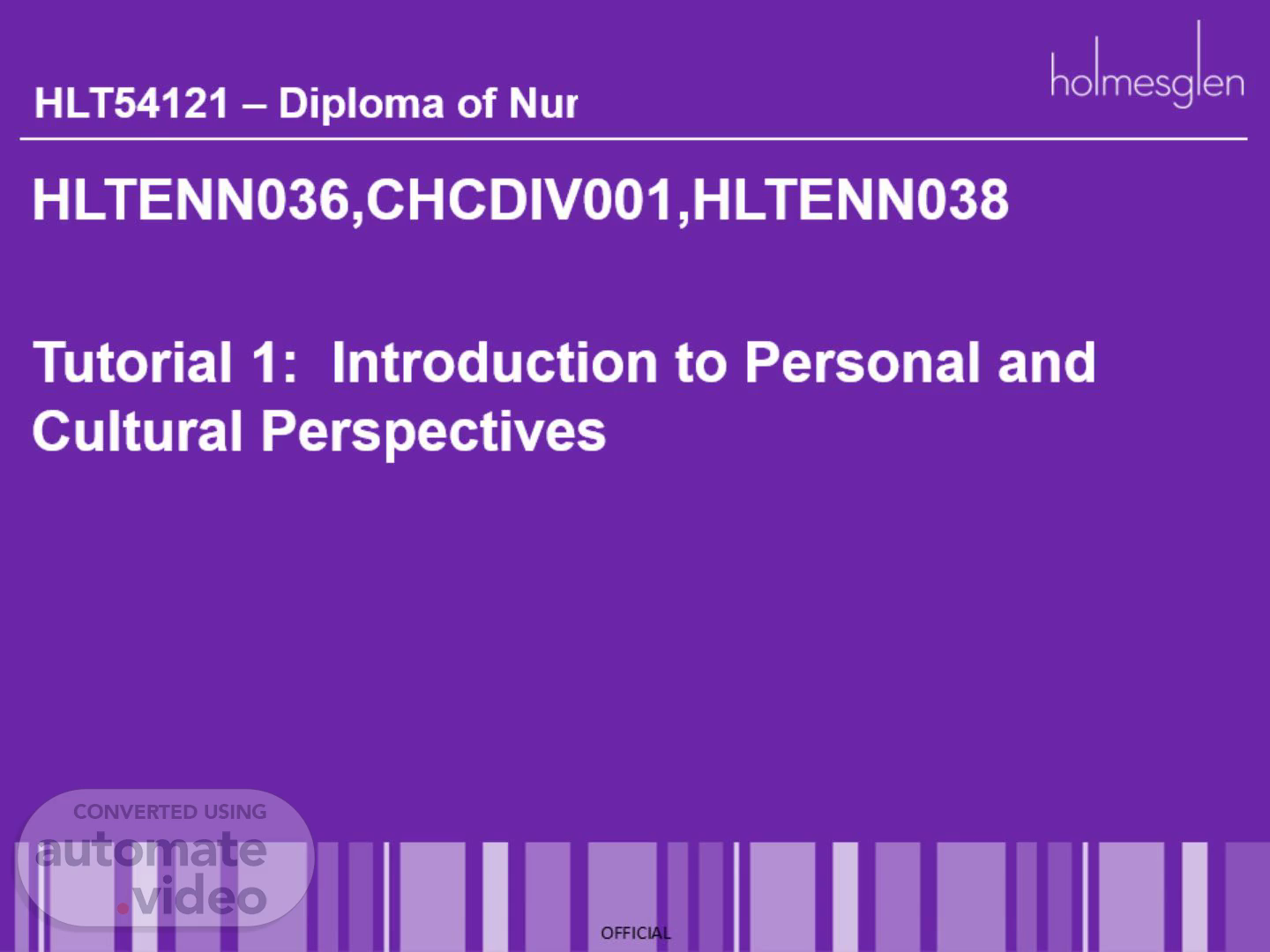
HLT54121 – Diploma of Nursing
Scene 1 (0s)
HLT54121 – Diploma of Nursing. HLTENN036,CHCDIV001,HLTENN038 Tutorial 1: Introduction to Personal and Cultural Perspectives.
Scene 2 (8s)
By the end of this topic, you will be able to confidently reflect on these topics:.
Scene 3 (21s)
What is a Perspective?. Definition: A perspective is a particular attitude or way of viewing something. Key Points: Influenced by personal experiences, beliefs, and values. Shapes how we interpret information and events..
Scene 4 (33s)
What is a Bias?. Definition: A bias is a prejudice in favor of or against something or someone. Key Points: Can be conscious or unconscious. Affects judgments and decisions, often leading to unfair treatment..
Scene 5 (47s)
What are Cultural Perspectives?. Definition: Cultural perspectives are views shaped by cultural backgrounds and experiences. Key Points: Influences values, traditions, and behaviors. Important for understanding diverse viewpoints in multicultural interactions..
Scene 6 (1m 0s)
How Can Biases Impact Society?. Key Points: Discrimination: Leads to unequal treatment based on race, gender, or other factors. Social Inequality: Reinforces existing social hierarchies and disparities. Conflict: Causes misunderstandings and divisions among groups..
Scene 7 (1m 14s)
How Can Cultural Bias Affect Communication?. Key Points: Misunderstandings: Leads to incorrect interpretations of others' words and actions. Stereotyping: Assumes certain traits or behaviors based on cultural background. Ineffective Interaction: Hinders effective and respectful communication..
Scene 8 (1m 29s)
Common Biases in the Workplace. Examples: Gender Bias: Preference for one gender over another. Racial Bias: Differential treatment based on race or ethnicity. Age Bias: Discrimination based on age, affecting hiring and promotions. Confirmation Bias: Favoring information that confirms existing beliefs..
Scene 9 (1m 44s)
Why is it Important to Reflect on Our Own Biases?.
Scene 10 (1m 59s)
How Can Understanding Different Perspectives Benefit Us?.
Scene 11 (2m 13s)
Conclusion. Summary: Understanding perspectives and biases is crucial for effective communication and a harmonious workplace. Reflecting on and addressing biases improves personal and professional interactions. Call to Action: Embrace diversity, practice self-reflection, and engage with different viewpoints for a more inclusive environment..